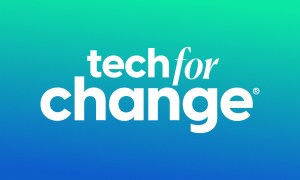

This article is part of The Food Fight, a series that explores how the United Nations’ World Food Programme is using technology to battle food scarcity and put an end to hunger by 2030.
A lush, green mat of fresh animal fodder is an unlikely sight in the harsh Sahara Desert, but a project from the United Nations World Food Programme (WFP) is helping crops flourish in unexpected places. Using purpose-built hydroponic systems, Sahrawi refugees in Western Algeria have been able to grow barley grass to feed their livestock, in turn increasing milk production and meat quality. By selling surplus fodder, the refugees have been able to earn additional income and buy goods once beyond their means. Some 150 units have been installed in the past few years, producing nearly 4,500 pounds of fodder per day.
The project is part of H2Grow, an initiative that aims to solve hunger in arid regions and help vulnerable communities become more self-reliant by securing food resources. H2Grow currently sponsors seven projects around the globe, from refugee camps in Chad to desert slums in Peru. With the help of agritech systems, the hope is that desert-dwelling communities may overcome food scarcity and gain resilience against some of the most immediate impacts of climate change.
Leaving dirt in the dust
The secret to H2Grow is hydroponics, a soil-free cultivation technique that uses up to 90% less water than traditional agriculture, according to Nina Schroeder, head of scale-up enablement at the WFP Innovation Accelerator. Better still, hydroponic agriculture doesn’t require lots of land or depend on seasons. As long as you have the right basic ingredients (seeds, water, light, and nutrients), crops can grow year-round.
Hydroponics is by no means a new concept, but most people are familiar with the technique in urban settings, as a way of growing crops indoors, with an eye toward large-scale cultivation in a limited space. These ventures tend to be high-tech and business-minded.
“What’s different about the way we do hydroponics is we take the technique and adapt it to the challenging conditions we work in
“What’s different about the way we do hydroponics is we take the technique and adapt it to the challenging conditions we work in,” Schroeder said. “We turn it into a localized, affordable, and simplified solution designed for people with no particular background [in agriculture], using only locally available materials.”

That poses a challenge for the H2Grow team. What’s local and affordable in Peru might not be local and affordable in Sudan, so WFP works with community partners to pinpoint and understand some of their most urgent problems.
H2Grow uses a common base system for each region and adapts the system from there. The result is a tailor-made hydroponic system that’s customized for the community it’s designed to serve. “There is no one size fits all,” said Schroeder.
Different strokes for different folks
In Chad, residents wanted to grow fodder to feed their livestock. Seeds for fodder such as barley grass contain sufficient nutrients to grow using only water and light. “Users just need to soak the seeds, add them to the hydroponic containers, make sure they receive adequate sunlight, and on day seven, it’s ready for harvest,” Schroeder said.

In Lima, Peru, however, residents wanted to grow produce, such as leafy greens, which require nutrient solutions to be added during the growing process. With the help of community partners, WFP launched a pilot program in three districts across the capital, reaching more than 200 vulnerable women and their families. The group is now looking into ways to scale-up the system in a bid to provide these residents with business opportunities.
The most high-tech H2Grow units are the Food Computers developed for Syrian refugees in the Azraq refugee camp east of Amman, Jordan. The Food Computer uses sensors to monitor climate, energy, and plant growth inside a specialized grow chamber. Powered by a Raspberry Pi, the system tracks things like temperature, humidity, dissolved oxygen, and mineral consumption to achieve optimum growth potential. WFP was helped by researchers at the Massachusetts Institute for Technology and the Agency for Technical Cooperation and Development in developing the Food Computers.
It takes a village
In each case, H2Grow aims to keep the initial investment below $100,000, while providing a few community partners with the resources needed to motivate neighbors into following in their footsteps.
“We start with champions who are most motivated in the community,” Schroeder said. “They start to cultivate their own fodder, we give them a bit of extra training, and have them go out with that training material in hand to train others in the community.”

H2Grow systems boast benefits beyond solving food scarcity — they’re designed to ensure financial and physical security as well. During the dry months at the Belail refugee camp in Sudan, women often search for fodder outside the safety of the camp, Schroeder said, which exposes them to risks of theft, violence, and abduction. Through the hydroponic pilot program, WFP hopes to foster food security and, in turn, physical security for the residents.
There are inherent challenges to delivering these solutions. Some of the cultures WFP aims to serve are traditionally pastoral, meaning agricultural production is new and unfamiliar to them. But the hope is that by learning to use these systems, vulnerable communities will be better equipped to withstand existential threats at their doorsteps.
One of those threats is climate change, which is causing conflict around the globe as people fight for access to shrinking water and food sources. Equipped with hydroponic systems, “people wouldn’t have to migrate and ‘share’ the fewer grazing lands that are available,” Schroeder said. “If they can grow crops in harsh conditions and save a lot of resource, this will be a game-changer. Now, the trick is to spread the knowledge and increase access to the tools for more people to start growing.”


